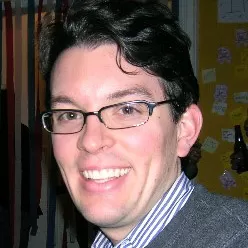Robert Goodspeed
Robert Goodspeed is an Assistant Professor of Urban Planning at the University of Michigan.
Contributed 28 posts
Robert Goodspeed is an Assistant Professor of Urban Planning at the University of Michigan. He holds a PhD from the MIT Department of Urban Studies and Planning and previously worked for the Boston Metropolitan Area Planning Council. See his academic website for more on his teaching and research.
Getting the Transportation Infrastructure We Need
<p> <strong>Bank, Commission, Capital Budget or Business as Usual?</strong> </p> <p> There's a growing consensus the U.S. needs to invest more in our infrastructure, especially our transportation infrastructure. Too many roads and bridges are in poor repair, and congestion is slowing the economy of many cities. High gas prices has only added to intense interest nationwide for new and enhanced public transportation. With the expiration of the SAFETEA-LU legislation, next year Congress has the opportunity to revise the policies guiding investment in this critical infrastructure. </p> <p> Unfortunately, after the interstate highway system, the federal role in transportation infrastructure is mostly known for its excessive pork barrel spending (bridges to nowhere) and limited funds and Byzantine policies restricting mass transit investment. </p> <p> How should we evaluate the various proposals to reform federal policy? The Urban Land Institute (where I am working this summer) proposed an 8-point "action agenda" for infrastructure in their second-annual <a href="http://www.uli.org/AM/Template.cfm?Section=Home&CONTENTID=125957&TEMPLATE=/CM/ContentDisplay. cfm">infrastructure report</a>. The agenda is a statement of principles that should guide investments. It includes: build a vision for the community, invest strategically in coordination with land use, fix and maintain first, reduce driving, couple land use decisions with water availability, break down government "silos," cut pork barrel spending and support smart growth, keep score and keep governments accountable. </p> <p> Taking those principles as advice, let's take a look at what has been proposed. </p>
What Flavor of TEA Do You Want?
<p> The federal law setting nation transportation funding and policy, SAFETEA-LU, is set to expire on September 30, 2009. The huge bill has regulated everything from the New Starts transit program to thousands of pork-barrel transportation projects around the country. With unprecedented concern over global warming, a new president in November, and popular frustration with congestion on both transit and highways, there may be the opportunity for a major revision in federal policy. In this post I review some of the debate so far, and outline the proposals recently released by an independent commission. </p>
Smart Growth at the Grassroots, Part 2
<p><strong>Rethinking College Park</strong> </p><p><a href="http://www.flickr.com/photos/rethinkcollegepark/389600607/" title="Route 1 by RethinkCollegePark, on Flickr"><img src="http://farm1.static.flickr.com/144/389600607_46aace7f11_m.jpg" alt="Route 1" hspace="5" vspace="5" width="240" height="180" align="right" /></a>Is College Park, Maryland a great college town? Although the town is home to a top-ranked national research university that is one of the largest employers in the state of Maryland, the town pales in comparison with the nation's best-liked college towns, whether Ann Arbor, Michigan, Ithaca, New York, or Charlottesville, Virginia. In this post I describe <a href="http://rethinkcollegepark.net/blog/">one attempt</a> to use the internet to improve an aspiring college town. </p>
Smart Growth at the Grassroots, Part 1
<p> <strong>Matching Obstacles and Techniques</strong> <em>(Part one of two)</em><br /> <br /> Creating Smart Growth in our metropolitan areas is generally more complex than conventional auto-oriented development, more expensive, and requires more public involvement and coordination. The strong policies and regional cooperation planners desire to coordinate development have proven politically challenging. Unless planners are able to create systems that overcome these obstacles our efforts to encourage Smart Growth will be stymied. Luckily solutions are available, but they must be as nimble and resourceful as the forces they hope to counter. </p>
Considering a Smart Growth President
<p>It's often said that in America, urban development issues are decided at the local level. In general the rule of thumb is accurate, explaining a country home to cities as different in form as Houston, Texas and San Francisco, California. The notable exception to the rule is the country's interstate highway system, build with extensive involvement of the federal government. However, under closer inspection we can find a number of areas where federal funding and policies has a strong impact on urban development. A survey of what the leading presidential candidates are saying about urban policy suggests what priorities our next president may have.</p>

























